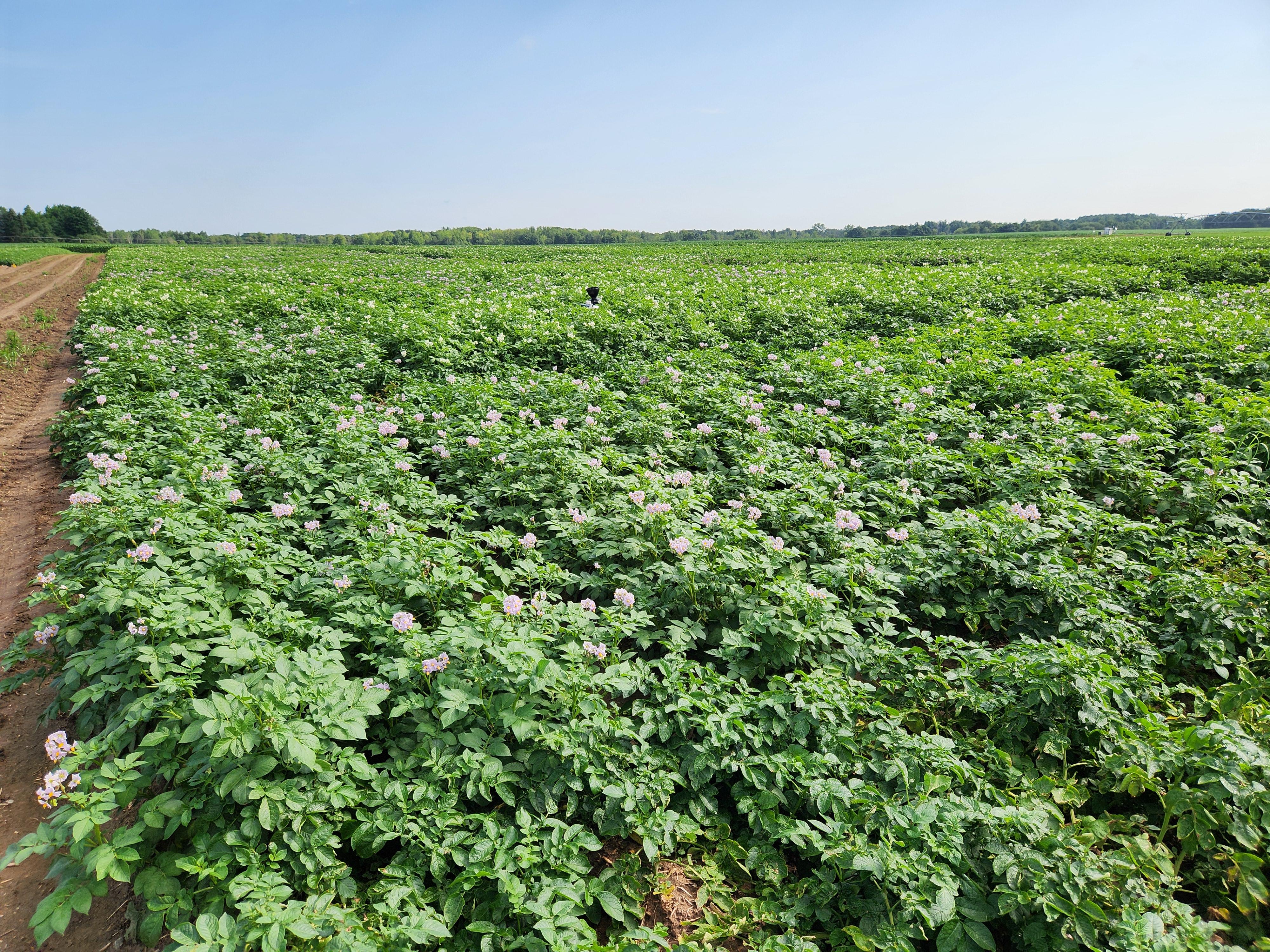Michigan State University Extension and Michigan Potato Industry Commission potato seed spacing and depth research
MSU Extension, in partnership with the Michigan Potato Industry Commission, conducts potato seed spacing and depth research with published factsheets highlighting year one research.

Michigan is among the top 10 potato producing states in the United States, with a large portion of Michigan potatoes produced in Montcalm County. Michigan State University Extension has invested decades into research to advance the Michigan potato industry by advancing potato varietal development that supports the supply of potatoes for nationwide chip manufacturers. These varieties are developed to increase climatic resilience, improve agronomic traits and improve processing quality for the potato processing industry.
When varieties are developed to meet the agronomic traits for the commercial chipping industry, the optimal growing practices that maximize a grower’s yield and economic profitability is still unknown. In general, it can take about 5 to 7 years of commercial production to develop the best production practices for a new variety.
One of the major agronomic factors that influences potato yield and quality for the commercial potato industry is plant spacing and seed depth. Each new potato variety developed for the industry can have its own preference for seed spacing and depth. Therefore, researchers at Michigan State University (MSU) Extension recognized this need for more research to optimizing potato variety agronomics and economic profitability.
MSU Extension specialists, educators, local producers and the Michigan Potato Industry Commission partnered and designed a three-year research study to identify the optimal seed spacing and planting depth for two newly released varieties: Mackinaw and Bliss, with an older variety, Lamoka.

Year one of the research study was conducted at the MSU Montcalm Research Center in Lakeview, Michigan, between May and September 2024. The trial procedure consisted of four different in-row plant spacings: 7 inches, 9 inches, 11 inches and 13 inches. The planting depths were 3 inches, 5 inches and 7 inches. The trial was set up as a randomized block designed with four replicates.
The trial was hand planted May 13 and 14, 2024, using trowels with vertically marked distances to estimate the planting depths during seed placement. All other agronomic practices followed local grower practices as recommended by MSU Extension for commercial potato production. Vines were killed at 112 days after planting and harvest was conducted 134 days after planting. The results of the study were compiled into two main categories, one for agronomics and one for economics.
Preliminary results – agronomics
The preliminary results for the agronomics in the study show that seed spacing statistically influenced total yield and U.S. #1 yield categories in terms of output. Seed spacing also influenced tuber size distribution for B and A2 grade yield. Seed variety statistically affected B and A2-grade yield while planting depth affected specific gravity as well. Seed spacing, variety and planting depth all affected tuber yield, tuber size distribution and specific gravity independently.
Preliminary results – economics
The economic analysis of the research study quantified the economic value of the effect of seed spacing and seed depth on yield outcomes and profitability. The analysis is based on the yield outcomes of the study for both total yield and U.S. #1 yield using a fresh price of $17 (cwt/ac). The only variable cost considered in the analysis was the additional seed cost for closer plant spacings. This was because the researchers first wanted to assess whether any additional yield achieved through closer seed spacing was economically viable given the additional seed costs in year one.
Seed spacing, seed variety and seed depth all affected economic profitability in terms of gross revenue, net returns and other metrics like specific gravity.
Factsheet summary results
The results, data and graphs are further summarized in two MSU Extension factsheets. There is a factsheet based on the agronomics of the study, and a factsheet that shows economic considerations in terms of yield and profitability of different seed spacing and depths. The factsheets show a more detailed analysis on specific data in the study, including graphs, and preliminary conclusions of the study in year one. You can find the factsheets by clicking on the links below.
2024 Potato Seed Spacing and Planting Depth: An Agronomic Analysis
Economics of Potato Seed Spacing and Planting Depth in Potato Production
A special thank you to the Michigan Potato Industry Commission, Kipp Farm Services in Edmore, Michigan, MSU potato specialist Chris Long and research assistant Phabian Makokha for their partnership, hard work and dedication in this research to advance Michigan potato production.
Michigan State University will continue this research to further develop best practices to optimize commercial potato production, as well as optimizing producer’s economic value with planting recommendations to maximize grower returns.



 Print
Print Email
Email